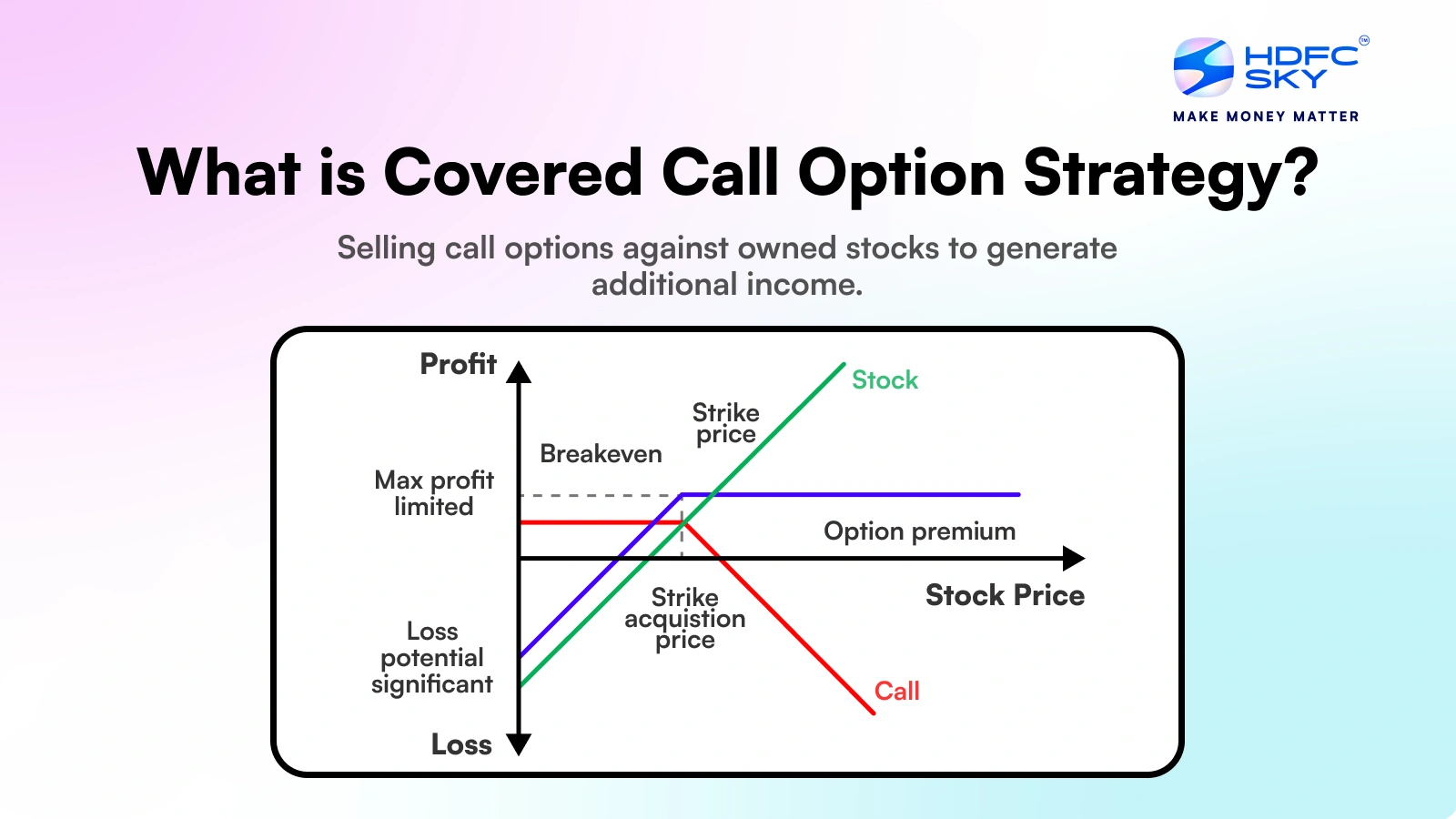A Guide to Covered Calls

📘 Covered Calls for Beginners
📌 Why Utilize the Covered Call Strategy?
- ✅ Win small and often
- ✅ Construct low-risk trades
Goal: Make more money with less risk - ⚠️ Short-term tax implications
(Taxed as short-term capital gains) - ❌ Avoid prediction-based decisions
Be conservative, not speculative - 🗓️ Sell calls with expiry no more than 45 days out
❌ Why You Should NOT Sell Naked Puts
- Limited upside, but unlimited downside
This risk asymmetry is dangerous - Poor for consistent cash flow
- Assigned to buy stock if price drops below strike
This only works if you have ample cash and want to own the stock anyway
💭 Mindsets to Embrace
-
Investment vs Speculation
Stick to strong principles → higher chance of long-term profit -
Lose little, win lots
Consistently favorable risk/reward setup = long-term edge
🧮 Option Value Basics
Option Value = Intrinsic Value + Time (Extrinsic) Value
- Intrinsic Value = Value if option is In The Money (ITM)
- Time Value = Value from time remaining until expiration
Example:
Underlying Stock: $45
| Strike Price | Intrinsic | Time Value | Total Option Value |
|————–|————|————-|———————|
| $50 (OTM) | $0 | $1 | $1 |
| $40 (ITM) | $5 | $1.5 | $6.5 |
📈 Key Financial Terms
- Sharpe Ratio: Risk-adjusted return
- Alpha: Performance relative to benchmark
- Beta: Stock’s volatility relative to market
🧠 Option Greeks (Quick Guide)
| Greek | Meaning |
|---|---|
| Delta | Price sensitivity of the option to the underlying asset. Also interpreted as the probability of being ITM. - Call: 0 → 1 - Put: 0 → -1 |
| Gamma | Rate of change of Delta (how fast Delta moves as stock price changes) |
| Theta | Time decay. Always negative. Highest when ATM. |
| Implied Volatility (IV) | Market’s expectation of volatility. Higher before events (e.g. earnings). Choose IV between 30% – 70% |
🔍 Choosing the Underlying Stock
(Skip if you already own the stock)
- Pick stocks you are comfortable owning long term
- Stable, low-beta stocks preferred
- Avoid earnings or high-volatility events near expiry
🎯 Choosing Strike Prices for Selling Covered Calls
✅ If you’re okay letting go of your stock:
- Choose Delta ~ 0.3 – 0.4
- Pick an OTM option with a chance to go ITM
→ Benefit: premium + potential capital gains
✅ If you want to keep your stock:
- Choose Delta close to 0
- Pick a deep OTM option
→ Lower premium, but higher chance of keeping shares
🗓️ Choosing Expiry Dates
- Sell options 30–45 days out
- Time decay (Theta) accelerates within final 30 days
- Watch out for:
- Earnings
- Political events
- Unexpected volatility spikes
🚪 Exit Strategy for Covered Calls
📏 Rules of Thumb
- The 1% Rule
- If extrinsic value < 1% of underlying price → Roll the call
- The 2 & 20 Rule
- If within 2 weeks, the option loses > 80% value → Buy back, lock in profit
- Code Red Rule
- If the stock crashes unexpectedly → Sell stock and exit all positions
🔄 By Scenario
| Scenario | Action |
|---|---|
| 📈 Stock Goes Up | Buy back call if you don’t want it called away |
| 📉 Stock Drops | Buy back for a gain, re-sell a lower strike safer call |
| ➖ Stock Stays Flat | Time decay works for you, roll out or resell at lower strike |
💡 The Poor Man’s Covered Call (PMCC)
Also known as: Long Diagonal Spread with Calls
🧱 Structure
- Buy a long-dated ITM call (LEAP)
- Expiry > 1 year
- Delta ≥ 0.75 (acts like a stock)
- Sell a short-dated OTM call
- Similar to covered call premium collection
- Be careful: If it moves ITM, close the position
🔁 Diagonal = Mix of:
- Vertical (same expiry, different strikes)
- Horizontal (same strike, different expiry)
📘 LEAP (Long-Term Equity Anticipation Securities)
- Options with > 1 year expiration
- Behaves like synthetic long stock (with less capital)
- Strong time value protection
- Look for Delta ≥ 0.75
📌 Extra Rules of Thumb
- Short-term volatility can create buying opportunities for option sellers
- Avoid selling too close to IV spikes (e.g. earnings, Fed meetings)